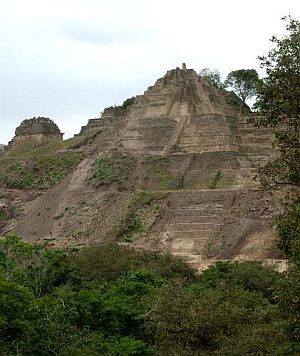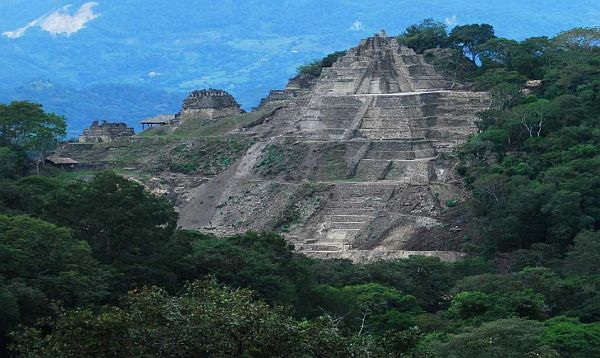Chiapas, Mexico - It was just over five years ago that researchers in Mexico discovered an enormous pyramid of the Maya civilization in Toniná, Chiapas.
The fact that the pyramid had remained concealed under what was believed to be a natural hill for around 1,700 years is truly incredible, particularly considering that it has been confirmed as the largest pyramid in Mexico and is even taller than Teotihuacan's enormous Pyramid of the Sun.
 |
La Jornada reports that it was found during explorations of the acropolis of Toniná in what is now the Mexican state of Chiapas. The archaeological site of Toniná sits on a platform covering 6 hectares and consists of seven terraces on the north side of the platform which rise above a plaza. Social, political, economic, and religious structures were constructed on the terraces, including housing, administrative units, and groups of temple-pyramids. There is also a ballgame court at the site, and over 100 carved monuments dating from the 6th to 9th centuries AD.
Toniná has been described as an aggressive state that used warfare to develop a powerful kingdom that rivalled Palenque. Toniná eventually became the dominant city in the west of the Maya region.
Emiliano Gallaga, director of the archaeological zone, told La Jornada that the pyramid was covered in vegetation and was initially believed to be a natural hill. However, exploration of the site soon revealed that the structure was almost entirely man-made, constructed by the ancient Maya inhabitants of Toniná.
Three-dimensional scanning of the pyramid revealed that it was "one of the largest constructions in Mesoamerica, comparable in size only to great Mayan cities like Tikal and El Mirador in Guatemala," said Gallaga. "Toniná is bigger than we suspected. The pyramids are connected by roads located on top of the surrounding elevations."
Gallaga added that, after evaluating all the information gathered from exploratory studies, it can be confirmed that the pyramid exceeds the height of the Pyramid of the Sun at Teotihuacan, which previously held the position as the tallest pyramid in Mexico at 65 meters (213 feet) in height.
BN Editor's Note: More than 300 hieroglyphic texts have also been found. Some of them reveal the names of city rulers. The texts could eventually help scholars understand the decline of the ancient Maya civilization.
Original article


